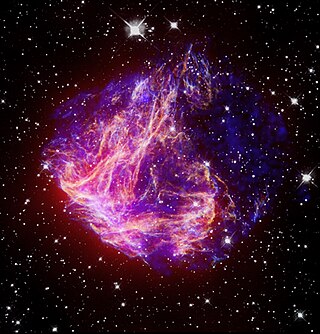Top Qs
Timeline
Chat
Perspective
LMC N49
Supernova remnant in the constellation Dorado From Wikipedia, the free encyclopedia
Remove ads
N49 or LMC N49[3] (PKS 0525-66,[1][3] PKS B0525-661,[3] PKS J0525-6604,[3] SNR J052559-660453[1]), also known as Brasil Nebula,[4] is a supernova remnant in the Large Magellanic Cloud.[2]
Wikimedia Commons has media related to N49.
After a massive detection of Gamma-ray and X-ray emissions from the LMC N49 were detected on March 5, 1979 by the Venera 11, 12, other 7 spacecraft,[5] and confirmed to be particularly strong by the first X-ray telescope, the Einstein Observatory.[6] The N49 supernova remnant is also known as the Brasil Nebula, due to its shape resembling the outline of Brazil in some images.
Remove ads
References
Wikiwand - on
Seamless Wikipedia browsing. On steroids.
Remove ads

